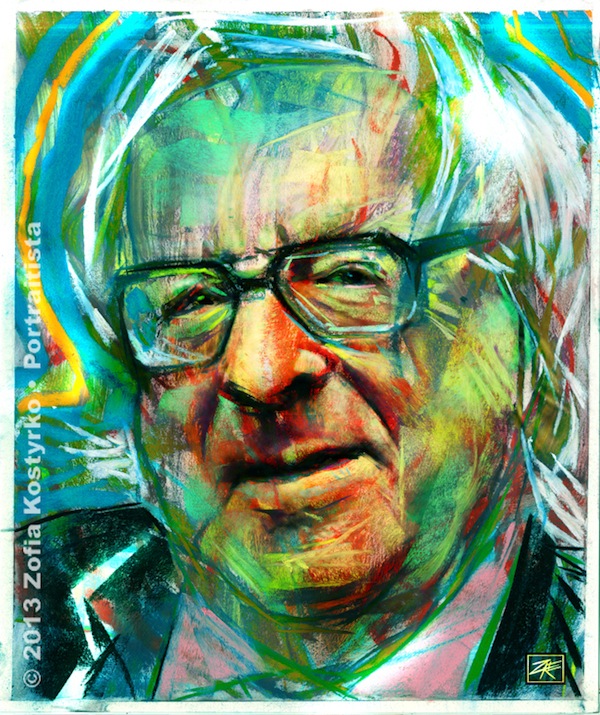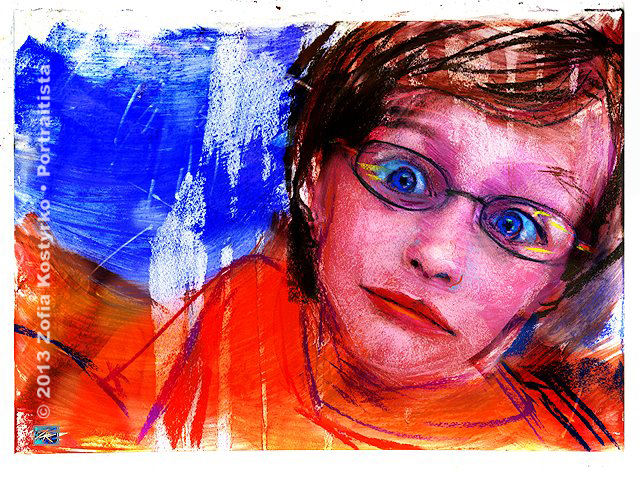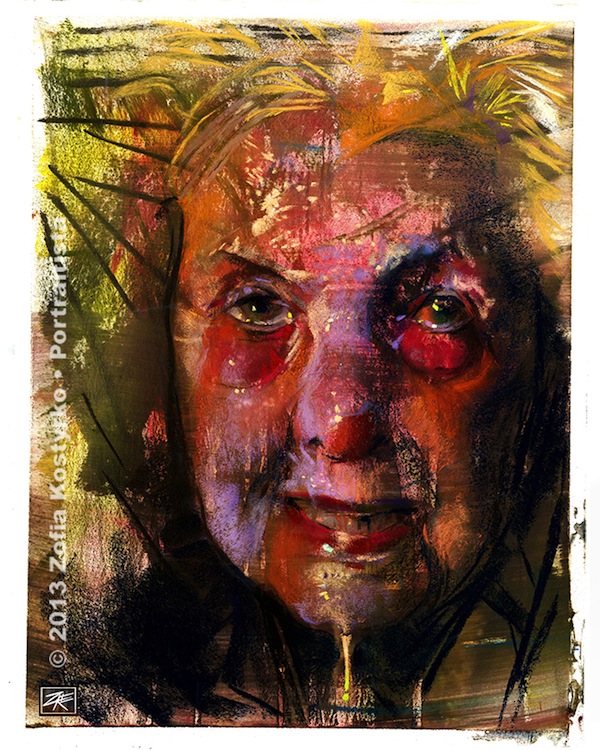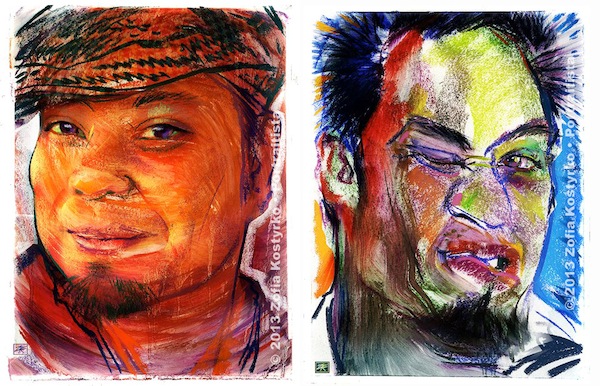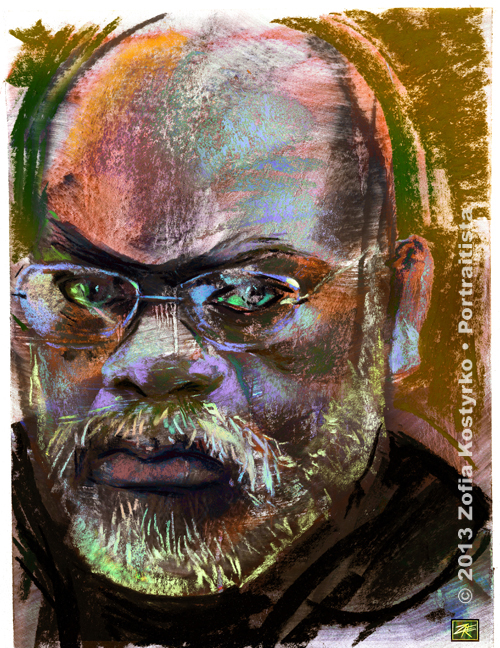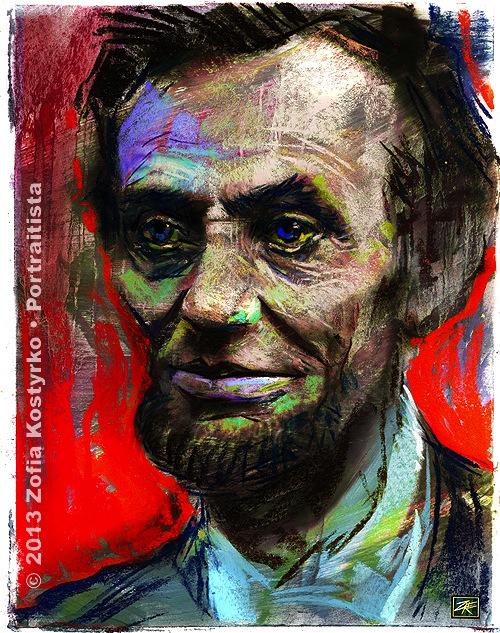Every face has a story. Everyone wants his or her story to be heard. A genuinely great portrait is a storytelling threesome: an aesthetic intercourse between the artist, subject, and viewer.
Since antiquity, painted portraiture has been a revered way to immortalize the beautiful, rich, famous and powerful people along with their treasured goodies. It also captured the poor, ugly and obscure, but only if their faces stimulated the artist’s imagination and tickled rich patrons’ fancies. Today, a formal portrait by a recognized master painter is still considered an exclusive luxury; reflecting the traditional values of a class-conscious society.
Yet in our Fast New World the big picture is changing: technology and mass media remix old hierarchies; putting unlikely groups and individuals directly in touch. Digital imagery runs viral through a vast network of social wormholes. Princes and paupers both share Instagram peek-a-boos into each other’s universes.
Every day the constant flood of information and imagery overwhelms our senses and synapses. Afraid to miss our texts and tweets we hardly have the time to look, study and really see. Yet we still take endless snapshots of each other. They are the democratic replacement for historically-exclusive portraits. Thus, in this age of instant gratification, how do we re-define ‘great’? Furthermore, when Instagram is just a click away, why should we bother to look widely for great portraiture?
Our world holds the answer: because the pace of communication is fast and getting faster while the quality of our connection is becoming increasingly superficial. A portrait is an opportunity to slow down and absorb a person’s essence; to genuinely connect with them in the present moment. A great portrait builds bridges across all social and emotional walls.
The role of contemporary portraiture is evolving in light of these changes. Social developments and multi-media technologies such as Instagram shape new value systems that challenge traditional perspectives on portraiture. Take for instance Sharon Knettell’s recent essay “Why Contemporary Portraiture Shouldn’t Show Its Face.” Here the conversation is restricted to old standards, which miss the larger point by not addressing contemporary portraiture’s changing form and relevance to our times.
I see lots of contemporary portraiture that should definitely “show its face.” Masterpieces abound outside the moneyed mainstream channels. Looking on Instagram reveals a wealth of creativity that deserves attention and investment from the art establishment. From the graffiti murals of my Angel City neighborhood to the tattoos on the skin of my friends: I see so much striking and original art that I often run out of storage on my iPhone snapping photos of these treasures.
Call it an occupational hazard. Born, raised and classically trained in Poland, I am a portrait artist; even calling myself “Portraitista.” Before I came into this role, I worked alone in my studio on all kinds of assignments other than portraits. Even with a zillion virtual friends, interacting with screens for most of my day got lonely. Like many others I know, I was in the habit of constantly scanning my smartphone. The bite-size glimpses available made it difficult to accurately read the subtle shifts in my friends’ faces. Nuances in expression enhance our ability to communicate, whereas misreading these details can lead to defensiveness. This essential distinction, combined with isolation and digital clutter, makes it easier to feel disconnected from friends and fellow human beings in general.
A year and a half ago I embarked on 365 Faces: a year-long project of painting daily portraits. Each included an essay describing the story behind who landed on my canvas and why. To be selected, the subject had to move me emotionally. I painted friends and strangers, famous faces and obscure ones. Some were dead. Their stories made the national news or just my day.
Doing this portrait project reconnected me with my art purpose, to the people I painted, my community and myself. I expanded my social network beyond my wildest imagination. I committed to capture each individual with my best insight and the respect each deserved.
I prefer to paint fast to best capture the life spark of each model. Technology has become my tool. Starting by looking at a live sitter or a photo snapshot (preferably un-posed), I draw and paint freehand like the master’s before me, caressing each face from canvas with brush or chalk. It is intimate, tactile, scary and thrilling. Then my painting is digitized in order to be further manipulated using color, contrast, and lighting controls. This approach distills and magnifies unique character details. Such details often form the perceptions used to subconsciously label each other as a “friend” or “foe.”
Visual mechanics of a photograph are easy to explain; but how a painted portrait works is more subjective and complex. Viewers are spellbound by unrealistic colors and dynamic lines moving over a sculptural form that returns their gaze. In my deliberately sketchy, dynamic works I let them fill in the missing elements and ask their own questions as they try and understand the face in front of them.
The 365 faces I painted brought unlikely people together: the essence of community inspired by art. The portraits explored the unfamiliar. They engaged, entertained, amused and provoked as Facebook avatars and conversation pieces. Others offered a friendly artistic presence on someone’s wall. Different faces now hang in art shows, mansions and retirement homes, while others were the subject of documentary films.
The value of contemporary portraiture can’t be defined by a price. We can’t buy the faces we see on Instagram. Beyond their beauty and craft, a portrait’s worth today should be defined by the connections it builds between people in our diverse communities and the conversation they ignite around the stories they tell.
A great portrait is one that has the power to stop us and show that we see one another. Just look around you: there is great contemporary portraiture showing its proud face in the world; doing just that.
Watch a video of Zofia painting one of her portraits:

